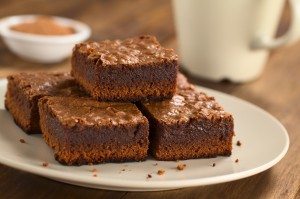
Confectionery Products
High risk foods are those that are ready to eat products which should be stored under recommended temperatures and have to be consumed within a limited time frame. High risk foods become easy targets for microbial contamination as bacteria can grow quickly in these food products. Any contamination of food products is a health risk for consumers and Food Business Operators must be over cautious in guarding against contamination in foods that are eaten raw like salads and fruit.
Confectionery items also come under the category of high risk foods as they can deteriorate quickly, even if they are kept under refrigeration particularly if milk products and cream have been used. Uncooked food like fruit and salads, juices and cold beverages need to be prepared with utmost care as bacteria can multiply very quickly in them.
Personal hygiene is very important when handling such foods to prevent cross contamination. Keeping the utensils clean and sterilized is equally important so no pathogens can grow in confectionery products when stored. All food business operators should ensure that the following precautions are kept in mind so that the high risk foods they serve are totally free of microbial infestations.
Cut fruits/salads, fresh juices and beverages
FBOs must make sure that -
Fresh fruits, juices and vegetables to be eaten as salads or in cold platters are consumed immediately on being cut.
Cut, raw vegetables and fruits are stored only under refrigeration at or below 4°C and that too for short time durations if they need to be stored before consumption.
Storage utensils are sanitized and foods are covered when stored
Only potable water is used to prepare beverages
Ice required for beverages is also made only from potable water.
Containers used for keeping ice for consumption should be separate from containers used for food and beverages
Confectionery Products -
Prepared confectionery products must be stored only in airtight containers.
If they are to be displayed then they must be inside covered and hygienic display cases.
Cream is kept covered and under refrigeration.
Finished products are properly refrigerated and that labels have an expiry date.
Properly cooled before they are wrapped and packaged as per regulations.
Only permitted food additives, colours, preservatives and flavouring agents are used.
Unwrapped confectionery items are used well within time as they have a short shelf life.
Proper attention should be given to cooking, preparing and storing high risk foods to keep them safe for consumption.
No comments:
Post a Comment